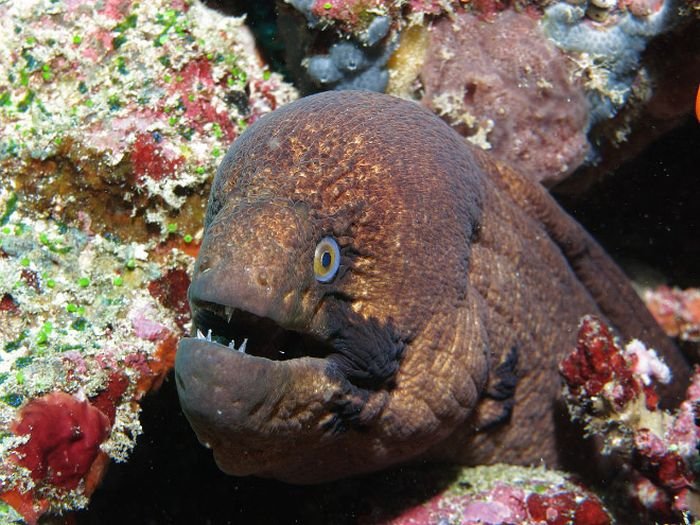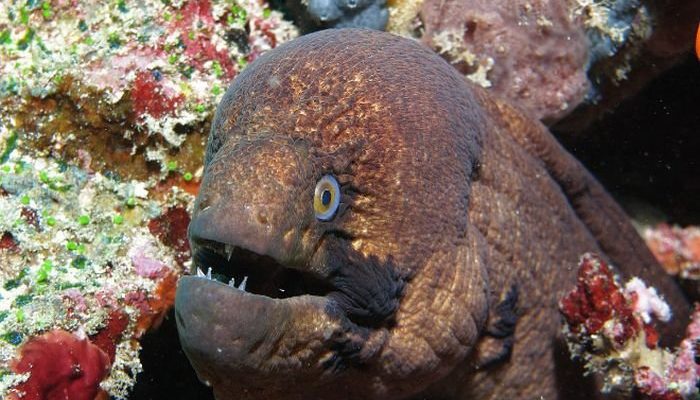
You might be wondering why these serpentine swimmers deserve our attention. Well, eels are not just fascinating creatures; they also play a crucial role in their ecosystems. They’re like the unsung heroes of aquatic life, helping to maintain balance in their habitats. So, let’s dive into the world of eels—exploring their status, the threats they face, and the exciting conservation efforts aimed at saving them.
Understanding Eel Species and Their Habitats
Eels belong to a unique family of fish known as Anguilliformes, and there are several species that are particularly noteworthy. The most famous of these is the European eel (*Anguilla anguilla*), which travels thousands of miles to breed in the Sargasso Sea. The American eel (*Anguilla rostrata*) shares a similar migratory pattern but calls the waters of North America home.
Both species face dwindling habitats due to human activity. This includes things like dam construction, which disrupts their migration pathways, and pollution, which degrades the water quality they depend on. Imagine trying to get to a family reunion but facing roadblocks at every turn—it’s no wonder eels are struggling.
Eels thrive in a variety of habitats, from freshwater rivers and lakes to coastal brackish waters. However, as these environments become threatened, so do the eels that inhabit them.
Current Conservation Status of Eels
So, are eels endangered? The short answer is yes. Both the European and American eels are classified as critically endangered by the International Union for Conservation of Nature (IUCN). The European eel, in particular, has seen an estimated 90% decline in population over the past few decades.
Here’s the thing: eels have a complex life cycle that makes them particularly vulnerable. They spend many years in freshwater or brackish environments, only to return to their oceanic spawning grounds to reproduce. This lengthy lifecycle means that any disruption at any stage—like overfishing or habitat degradation—can have catastrophic consequences for their populations.
In contrast, while American eels are still abundant, they too are experiencing declines due to similar threats, making their conservation equally important.
The Threats Facing Eels Today
Understanding the threats to eels can help us appreciate why conservation efforts are so crucial. Here are a few key dangers they face:
- Overfishing: Eels have long been a delicacy in various cultures, particularly in Europe and Asia. The high demand has led to significant overharvesting, which is unsustainable.
- Habitat Loss: Dams and other barriers limit the eels’ ability to migrate freely. This not only affects spawning success but also reduces the available habitat they need to thrive.
- Pollution: Eels are sensitive to changes in water quality. Chemical runoff from agriculture and urbanization can lead to toxic environments, making survival challenging.
It’s almost like eels are being pushed into a corner, with multiple pressures threatening their very existence.
Conservation Efforts: What’s Being Done to Help Eels?
Fortunately, efforts are underway to protect eels and their habitats. Governments and organizations worldwide are stepping up to make a difference. Here are a few noteworthy initiatives:
- Restoration Projects: Many regions are working on restoring natural habitats and removing barriers like dams. These efforts can help eels navigate their migratory paths more easily.
- Fishing Regulations: Several countries have implemented stricter fishing quotas to prevent overharvesting. This includes seasonal bans and size limits to ensure young eels have a chance to grow.
- Public Awareness Campaigns: Educating the public about the importance of eels can lead to more support for conservation efforts. The more people learn, the more they care about protecting these fascinating creatures.
Just think about it—every time a local community rallies to clean up a river or establish regulations on fishing, that’s a step closer to giving eels a fighting chance.
How You Can Help Eels
Feeling inspired to make a difference for eels? You don’t have to be a marine biologist to contribute to their conservation! Here are a few simple ways you can help:
- Choose Sustainable Seafood: If you enjoy eating fish, make sure to select options that are caught sustainably. This helps reduce pressure on vulnerable populations like eels.
- Participate in Clean-Up Events: Join local efforts to clean up rivers, lakes, or coastal areas. Cleaner habitats are better for eels and all aquatic life.
- Spread Awareness: Talk to friends and family about the challenges eels face. The more people know, the more action can be taken.
It’s amazing how small actions can add up to make a big difference for our slippery friends.
The Future of Eels
Looking ahead, the future of eels largely hinges on our commitment to conservation. While the current status might seem bleak, there’s hope. By supporting sustainable practices and advocating for policies that protect habitats, we can help secure a better future for eels.
Environmental efforts are like a long relay race. It takes time, persistence, and teamwork to achieve lasting change. With enough awareness and action, we can ensure that future generations will still be able to marvel at these incredible creatures.
In the grand tapestry of our ecosystems, eels might seem like small players, but they hold a significant piece of the puzzle. By understanding and addressing the threats they face, we’re not just saving eels; we’re also promoting healthier aquatic environments for a range of species.
So next time you hear about eels in the news or spot one in a tank at a store, remember their journey and their struggles. Let’s be the voice for these fascinating creatures, advocating for their survival and well-being in our oceans and rivers. Together, we can make a difference!

